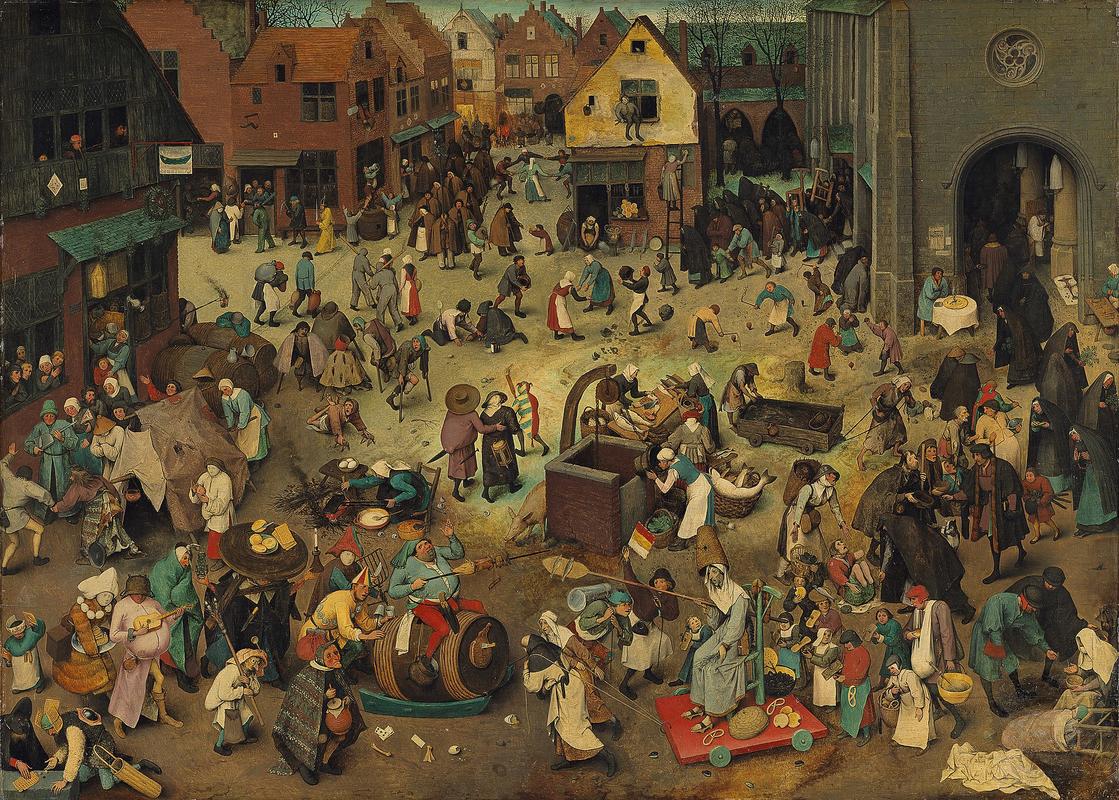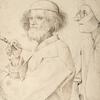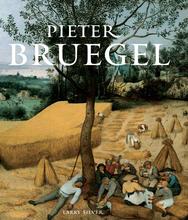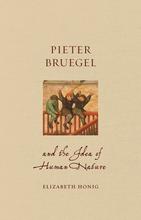Paintings such as this, The Fight between Carnival and Lent by Pieter Bruegel the Elder, are always enjoyable to look at because it seems there is a new detail to be found each time it’s seen.
In this case, there are many details to be found, little scenes within the larger scene of the painting. Bruegel painted a few of this type of picture, also known as “Wimmelbilder” or busy pictures, which is definitely an accurate description.
The left side of the painting is the “party side,” since that is the Carnival side, which, of course, makes the right side the Lent side. So, Carnival season, at least in the United States, is probably better known as Mardi Gras, even though that actually refers to Fat Tuesday, the day before Lent, not the entire time period leading up to Lent. During that period, there can be parades, parties, and other public celebrations, which usually means a lot of eating and drinking. The reason that there is lots of celebrating is because the day after Carnival, (Ash Wednesday, the first day of Lent) is a time of moderation, which can mean giving up items like meat, alcohol, sweets, or anything else the participant chooses to take a break from.
That being said, everyone has a different idea of fun or faith, especially in the 1500s. This painting, on display at the Kunsthistorisches Museum (Museum of Art History) in Vienna, includes highly detailed, and in some cases, slightly disturbing, scenes of both the fun and the faith sides-you just need to look closely. For example, there are numerous beggars on both sides of the scene; a group of them on the left side appear to be wandering in a circle, while the ones on the right are actively asking for, and receiving, alms from the wealthier members of the church as they leave services.
Also, on the right side, we have a sick-looking woman representing Lent, wearing a beehive on her head; the beehive was a symbol of the Catholic church. Meanwhile the man representing Carnival, and riding the cask, has a blackbird pie on his head! There are people playing at least one of the same games that is depicted in another of Bruegel’s “busy pictures,” Children’s Games. There are also some guys openly carrying weapons near an inn where someone is about to pour a bucket of something on some poor man’s head; this probably wouldn’t end well. Fun fact: the sign on the other inn reads: This is the Blue Barge. Lastly, just to make things even more interesting, right in the center of the painting, as the ground changes from dark to light, there is a couple with their backs to the viewer; being led by a jester or fool. The man appears to be carrying something on his back under his clothes; this can represent egotism in an allegorical form, meaning he is carrying mankind’s shortcomings and burdens. The unlit lantern carried by the woman emphasizes the point that they are being led by the fool, and not by reason.
During the time Bruegel painted this (1559), there was a bit of a struggle going on between Catholicism and Protestantism and it’s possible that this painting was meant to show some of the more pagan customs that could soon be repressed. Then again, what wasn’t repressed in the 16th century? If you want to dig a little deeper into Bruegel, there are also infrared and x-ray photographs of this painting (and others) which show changes and additions to the work, including a possible dead body being carried in the cart.

















I think it's the same difficulty as Children's Play [another painting by Pieter Brueghel the Elder]. It involves a lot of people, people doing different things.